Stairway to Splendor: Why are the Spanish Steps Famous
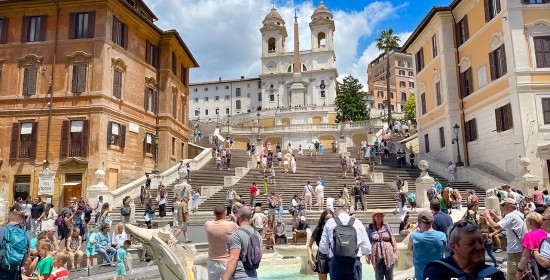
Welcome to Stefano Rome Tours! On our private Rome tours, we take you on a captivating exploration of Rome's most renowned treasures on our private tours in Rome.
Among the many fascinating sites on our Rome tours is the Spanish Steps (Scalinata di Trinità dei Monti in Italian). Like a majestic stairway sculpted by the hands of time, the Spanish Steps ascend gracefully, inviting visitors to ascend and immerse themselves in the timeless allure of Rome.
Join us as we unravel the mysteries, unveil fascinating curiosities, and immerse ourselves in the rich history and enchanting atmosphere surrounding this beloved attraction.
Stairway to Splendor: Why are the Spanish Steps Famous
What are the Spanish Steps in Rome?
Comprising 135 magnificent steps, the grand staircase connects the Piazza di Spagna at the base to the Trinità dei Monti Church at the top. As you approach the piazza, the wide and gently curving staircase gracefully ascends, drawing the eye upward to the Trinità dei Monti Church at the pinnacle. The sweeping lines and balanced proportions of the steps create a sense of harmony and aesthetic appeal.
At the foot of the Spanish Steps lies the Fontana della Barcaccia, or Fountain of the Old Boat. This enchanting Baroque fountain, designed by Pietro Bernini (the father of the famous Gian Lorenzo Bernini) depicts a boat partially submerged in water. The graceful flow of water cascading from the boat's bow adds a touch of serenity and whimsy to the scene. The soft sound of the water complements the overall ambiance, inviting visitors to pause and appreciate the beauty.
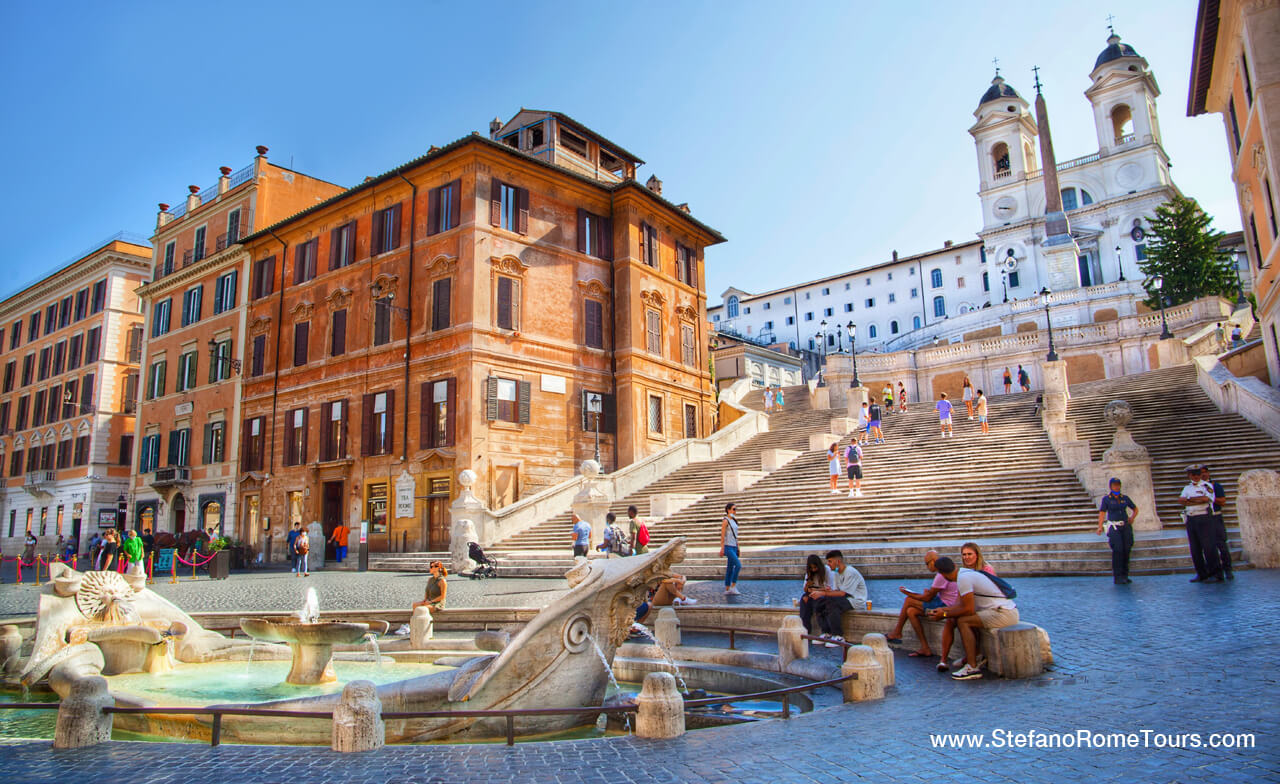
Brief History of the Spanish Steps in Rome
The Spanish Steps, was built in the 18th century during a period of urban renewal and architectural rejuvenation in Rome. The staircase was designed by the esteemed Italian architect Francesco de Sanctis and funded by a French diplomat named Étienne Gueffier.
Construction of the Spanish Steps began in 1723 and was completed in 1725. The grand staircase was commissioned to connect the Trinità dei Monti Church, located at the top of the steps, with the Piazza di Spagna at the base. The purpose was to provide a convenient and aesthetically pleasing access route for the church's visitors.
The name "Spanish Steps" is derived from the neighboring Spanish Embassy to the Holy See, which has been located in the Piazza di Spagna since the 17th century. The embassy's presence and the popularity of the square played a role in the staircase's designation.
Why are the Spanish Steps so famous?
At the heart of Rome's historic center, the Spanish Steps are a symbol of Roman glamour holding a special place in the city's collective imagination. Here are some of the reasons why the Spanish Steps in Rome are so famous.
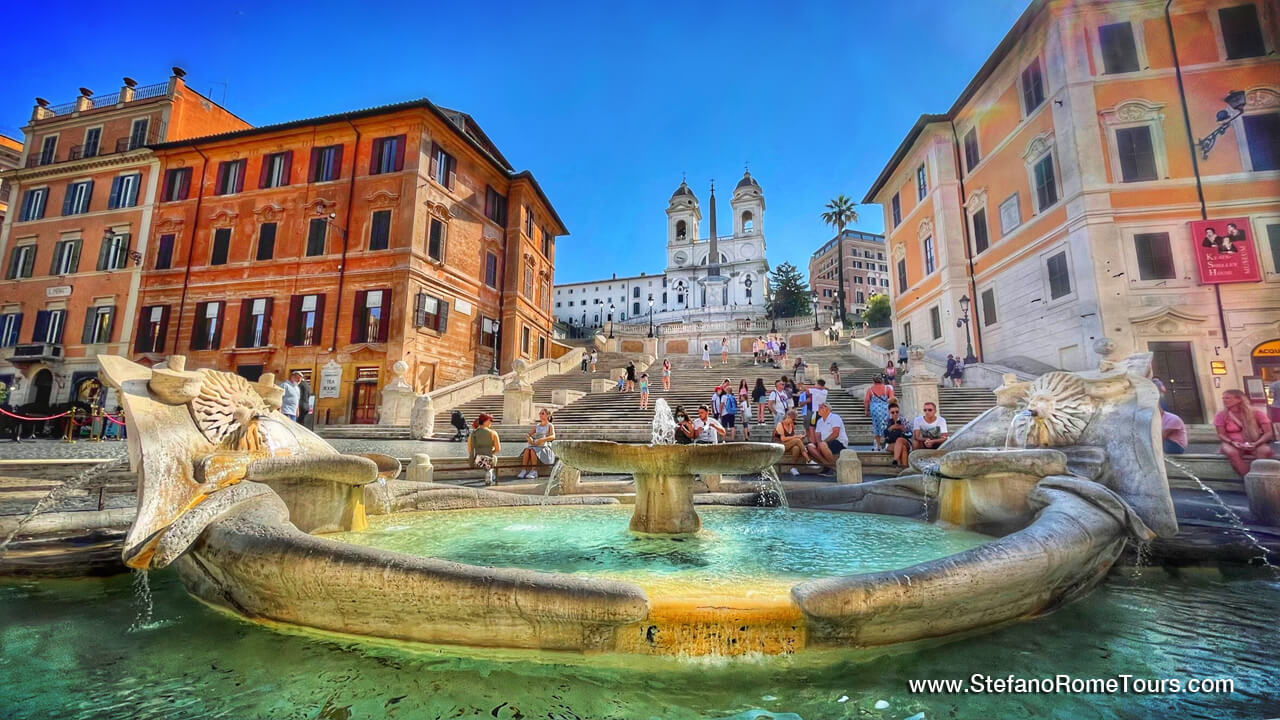
The Spanish Steps’ Stunning Architectural Beauty:
At the base of the Spanish Steps, the graceful Fountain of the Old Boat dances with joy. Its gentle murmur harmonizes with the laughter and chatter of those gathered around, creating a symphony of life. Water, sparkling in the sunlight, cascades in a playful embrace, paying homage to the vitality and spirit of Rome.
As you ascend the Spanish Steps, a symphony of architectural beauty unfolds before your eyes. Like a graceful dance of stone, the steps cascade down in a harmonious rhythm, drawing you deeper into their enchantment.
Each step, meticulously crafted from the creamy travertine, tells a story of elegance and artistry. The stone, weathered by time, bears the marks of countless footsteps, a testament to the passage of history. Smooth curves and gentle inclines guide your journey, inviting you to embrace the ascent with a sense of anticipation.
Terraces emerge at intervals, providing moments of respite where one can pause to admire the panoramic vistas surrounding them. As you continue your ascent, the steps guide you toward the Trinità dei Monti Church perched atop the final stairway. Its majestic facade greets you with a sense of awe. The church's creamy hues blend seamlessly with the pale stone of the steps as if they were destined to be intertwined.
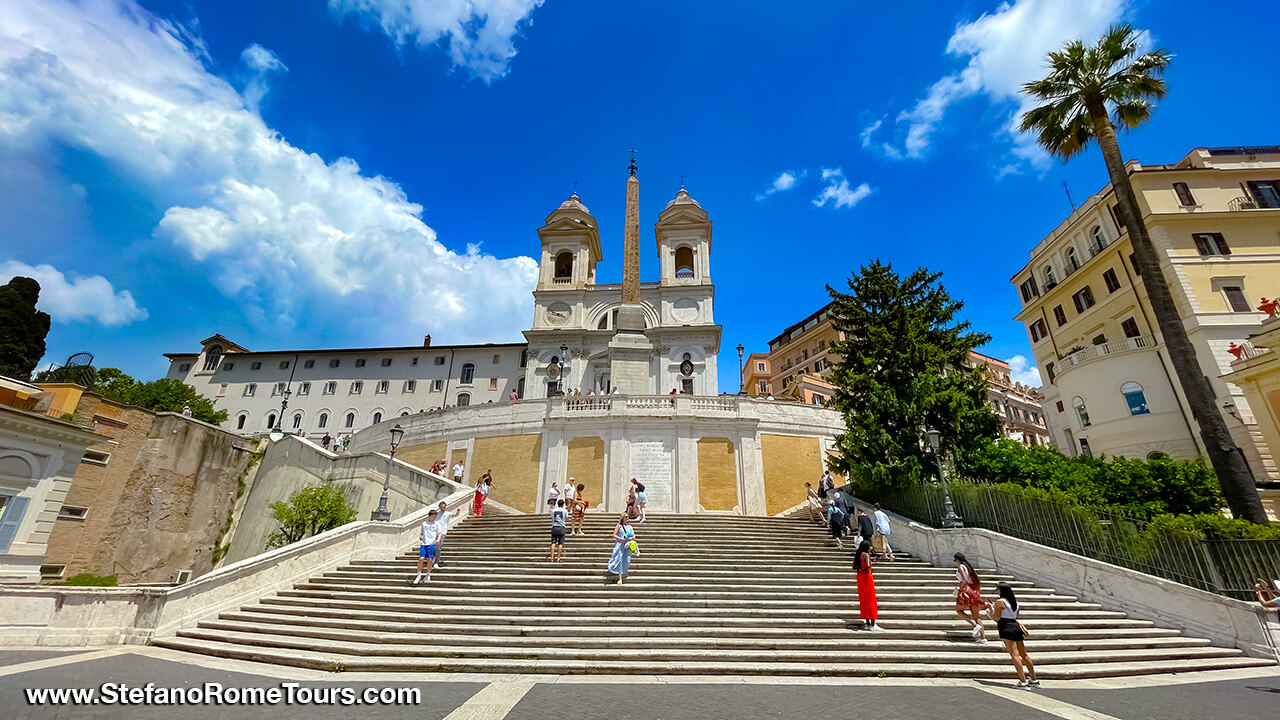
The Spanish Steps' historic significance:
The Spanish Steps are located in the heart of Rome's historic center, near important landmarks such as the Trevi Fountain and the Pantheon. They have witnessed centuries of history, and their central location has made them a popular gathering place for locals and tourists alike.
The Spanish Steps is historically a social place
Throughout its history, the Spanish Steps have served as a meeting place and social hub. In the 18th and 19th centuries, the steps were a popular gathering spot for artists, poets, and intellectuals who sought inspiration and engaged in lively discussions. The vibrant atmosphere attracted notable figures like Johann Wolfgang von Goethe, who famously mentioned the steps in his work "Italian Journey."
The Spanish Steps offer visitors magnificent views
Ascending the Spanish Steps rewards visitors with stunning panoramic views of Rome's historic center. From the top, one can marvel at the city's picturesque rooftops, domes, and spires. From the top of the Spanish Steps, a breathtaking panorama unfolds, revealing a captivating tableau below.
The expansive Spanish Square stretches out, bustling with life and vibrant energy. Beyond the square below, Via dei Condotti, one of the most popular Rome streets, emerges like a regal procession, adorned with elegant storefronts and luxury boutiques that tempt passersby with their refined offerings. The city's rooftops, adorned with terracotta tiles, stretch toward the horizon, punctuated by domes and bell towers that reach for the heavens.
The combination of architectural beauty and breathtaking vistas makes the Spanish Steps a sought-after spot for photographers and those seeking a quintessential Roman experience.
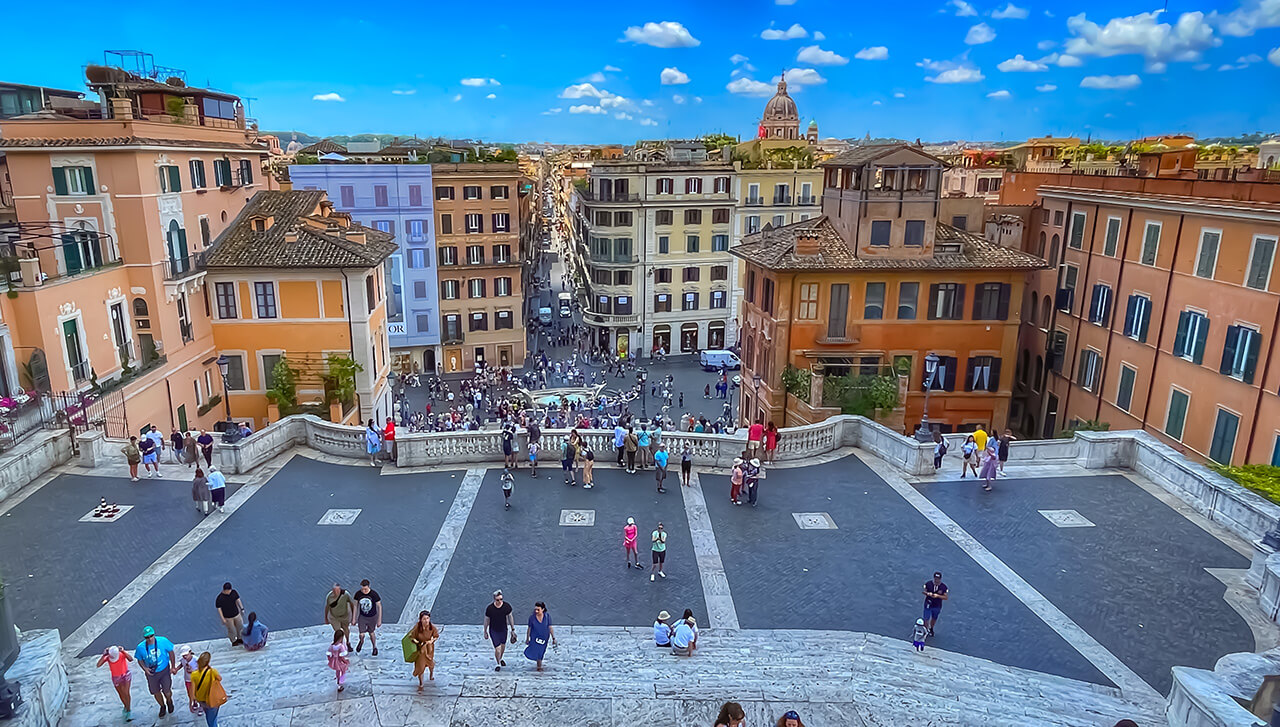
The Spanish Steps’ Cultural and Artistic Connections:
Over the years, the Spanish Steps have been associated with various cultural and artistic events. They have been featured in literature, films, and artwork, contributing to their fame and romantic allure. Many renowned artists, fashion designers, writers, and intellectuals have spent time in the area surrounding the steps, adding to their cultural significance.
Spanish Steps Romantic Legends and Films
The steps have been the backdrop for countless romantic moments, and a tradition has emerged where couples share a kiss at the base of the steps for good luck and everlasting love.
In the classic film "Roman Holiday" / "Vacanze Romane" starring Audrey Hepburn and Gregory Peck, the Spanish Steps play a significant role in their blossoming romance, particularly during the memorable scene where Hepburn enjoys an impromptu gelato while sitting on the steps. This romantic symbolism has contributed to the steps' fame as a place of enchantment and allure.
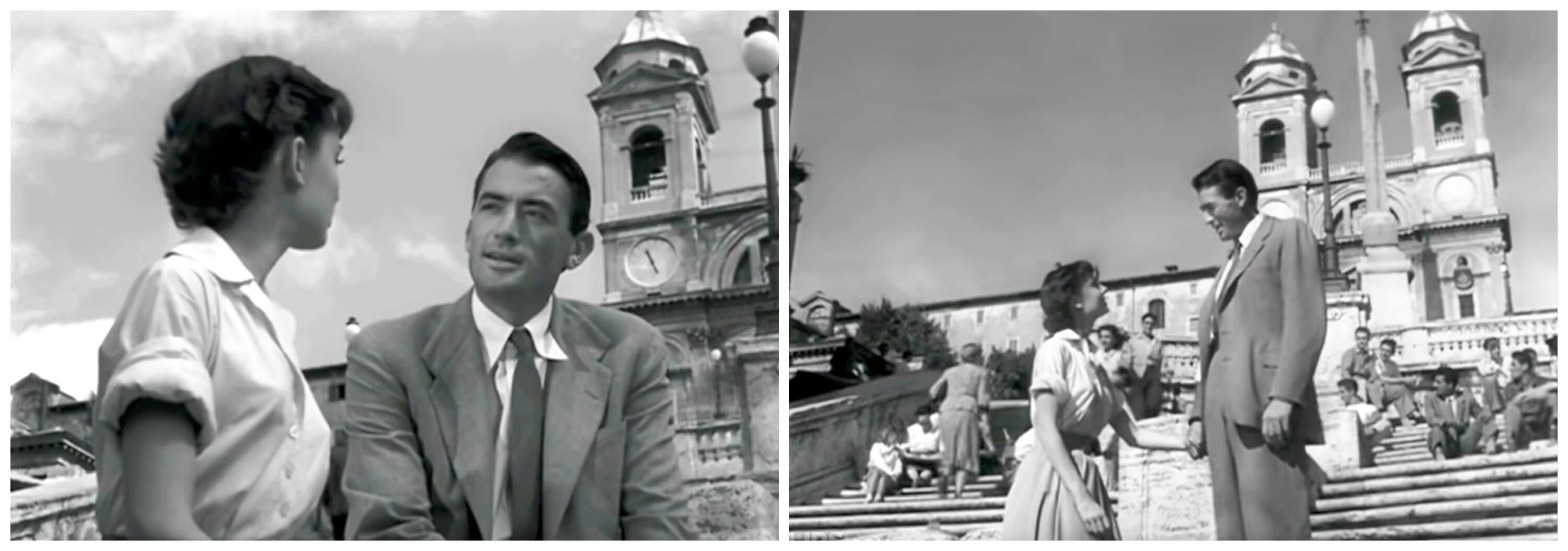
The Spanish Steps in Spring
In the springtime, the Spanish Steps in Rome come alive with vibrant colors and the delicate fragrance of blooming flowers, a tradition that began in the mid-20th century. Each year, typically during the spring season, the steps are adorned with azalea plants, creating a breathtaking display of vibrant colors.
The exact timing of when the azaleas are placed can vary from year to year, but it generally occurs in late April or early May. The practice of decorating the Spanish Steps with azaleas began as a way to celebrate the arrival of spring and add natural beauty to this iconic location. The azaleas, with their abundant blossoms in shades of pink, white, and red, create a stunning contrast against the backdrop of the stone steps, transforming the area into a botanical wonderland.
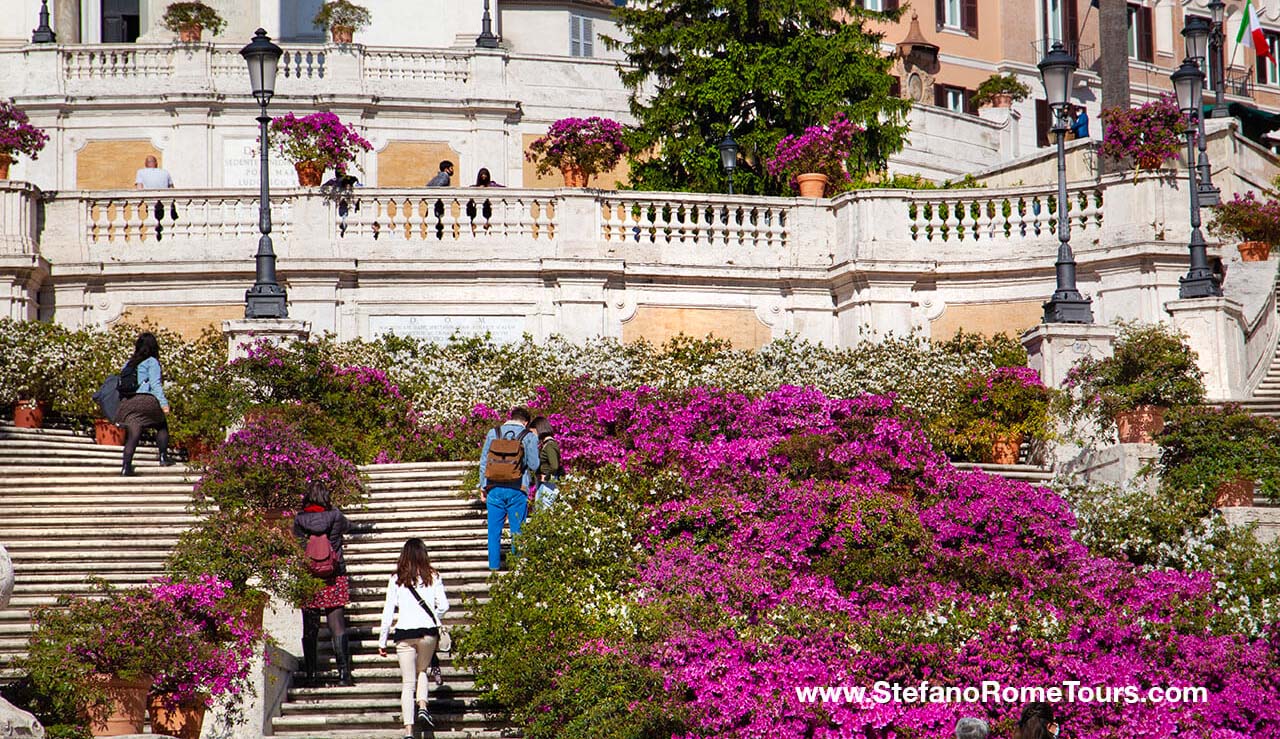
The placement of azaleas on the Spanish Steps has become a beloved tradition that attracts both locals and tourists. It is a sight that delights visitors, providing a burst of color and a refreshing ambiance to the bustling heart of Rome. The vibrant azaleas serve as a celebration of nature's beauty and a reminder of the changing seasons, further enhancing the allure of the Spanish Steps as a must-visit destination in springtime.
Ancient Obelisk on top of the Spanish Steps:
At the top of the Spanish Steps stands an ancient Egyptian obelisk, known as the Sallustiano Obelisk or the Obelisco Sallustiano in Italian. The obelisk, which dates back to the 1st century AD, was originally located in the Gardens of Sallust, an ancient Roman estate. It was later moved to its current location in front of Trinita dei Monti church during the construction of the steps.
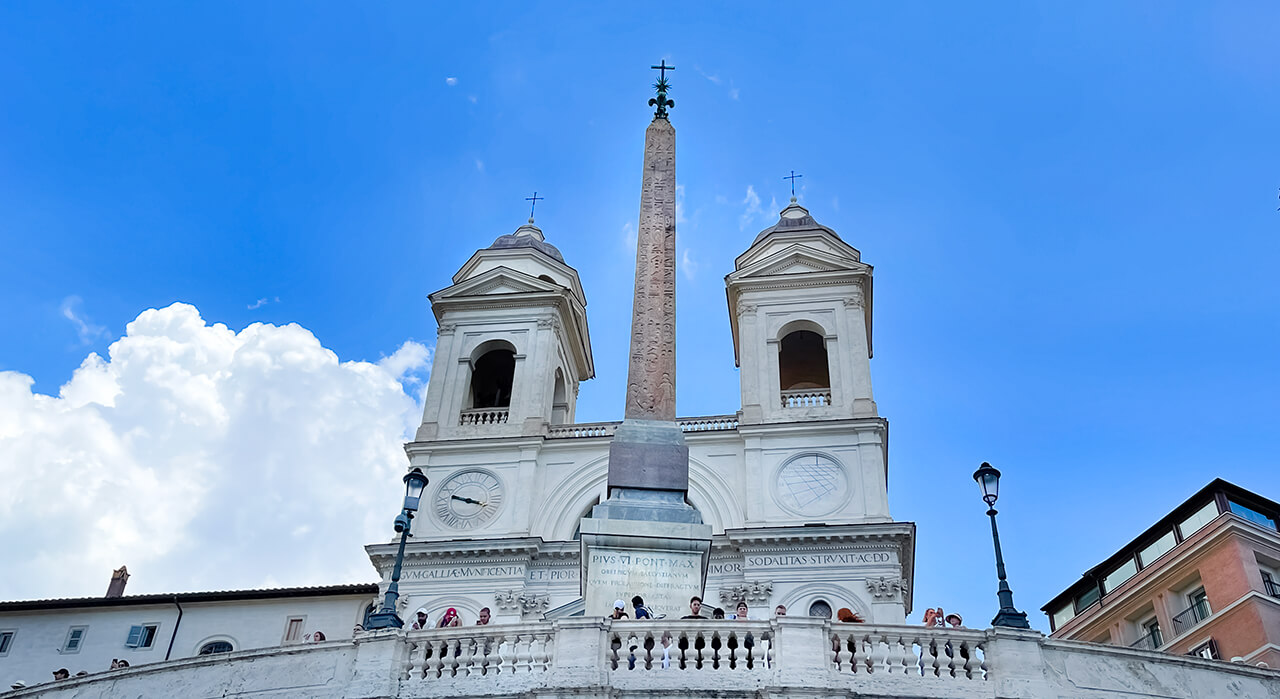
Curiosities and Intriguing of the Spanish Steps.
Spanish Steps harbor an array of captivating curiosities and intriguing tales. Let's delve into a few:
The Spanish Steps’ French Connection:
Despite its name, the Spanish Steps has a significant French connection. The steps were actually funded by a French diplomat named Étienne Gueffier in the early 18th century. Gueffier, who was deeply moved by the dilapidated state of the area, generously financed the construction of the staircase as a gift to the city.
The Trinità dei Monti Church on top of the Spanish Steps is a beautiful French Renaissance church. Commissioned by King Louis XII of France in the early 16th century, the church stands as a symbol of the French presence in Rome. The church's distinctive twin bell towers and exquisite artwork make it a must-visit destination.
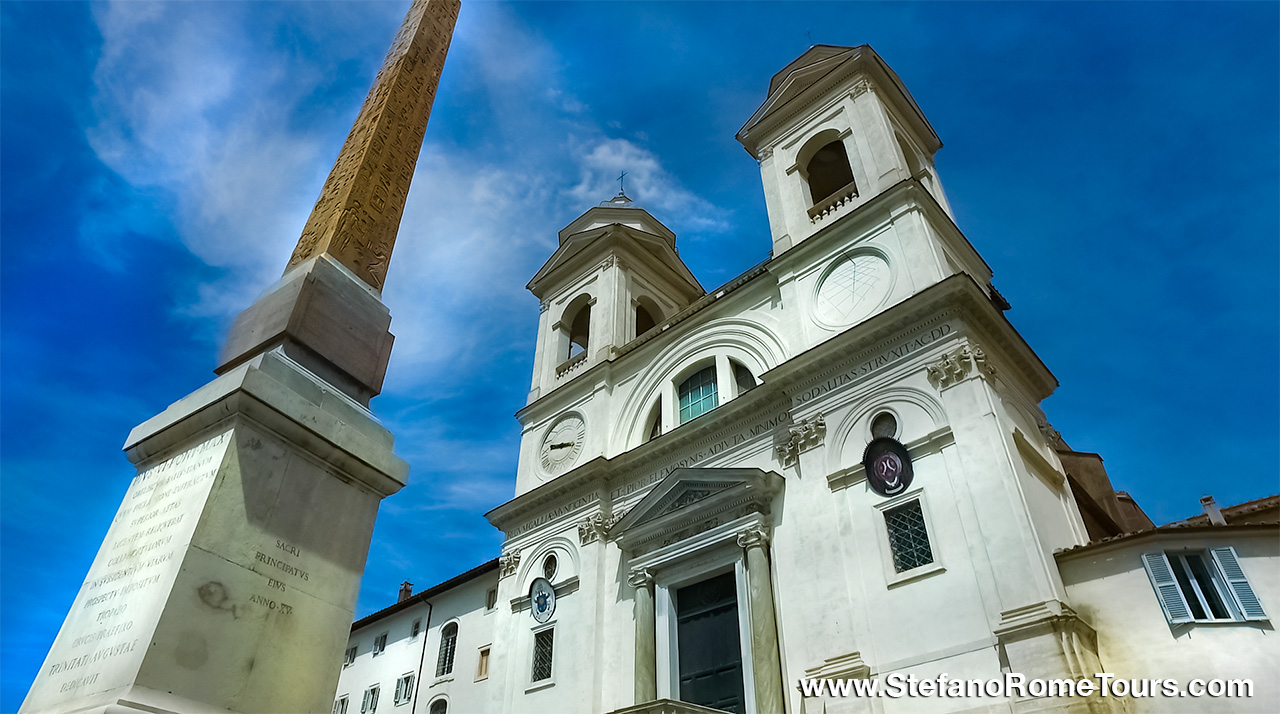
Cultural Events and Performances:
The Spanish Steps have become a stage for various cultural events and performances, including concerts, art exhibitions, and fashion shows. These events add to the allure and vitality of the site, showcasing Rome's rich artistic heritage.
The Keats-Shelley House Museum
The Keats-Shelley House Museum is situated in a building known as the "Piazza di Spagna 26," next to the Spanish Steps. The museum resides in the very house where John Keats, one of the most beloved English Romantic poets, spent the final months of his life in 1820. Keats passed away from tuberculosis at the age of 25 in a small room within the house.
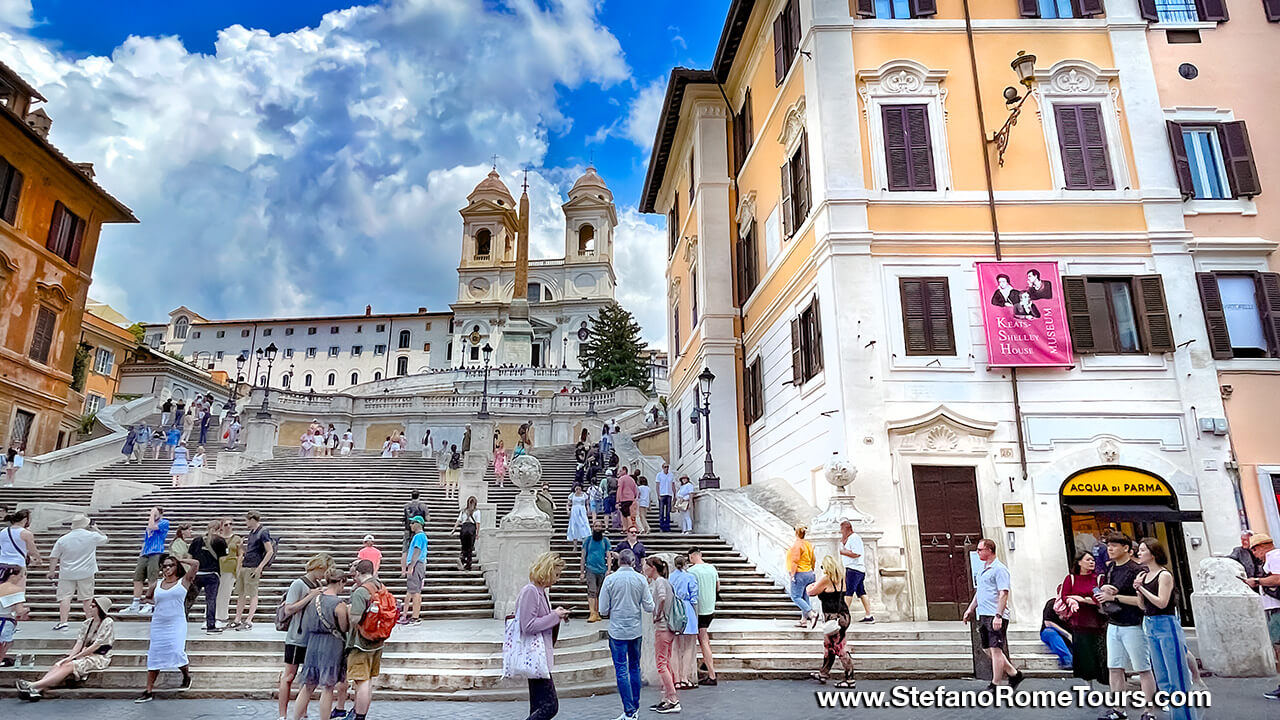
Conservation Efforts of the Spanish Steps
The Spanish Steps have witnessed various modifications and restorations to maintain their grandeur. Notably, in the early 19th century, the French diplomat François Clicquot-Muiron financed the addition of the elegant Fontana della Barcaccia (Fountain of the Old Boat) at the foot of the steps. This Baroque fountain, designed by the renowned sculptor Gian Lorenzo Bernini's father, Pietro Bernini, adds to the overall charm and beauty of the staircase.
In 2016, the luxury Italian brand Bulgari generously sponsored a restoration project involving cleaning, repairing damages, and revitalizing the staircase's splendor. This commitment to conservation highlights the enduring cultural and historical value of the Spanish Steps.
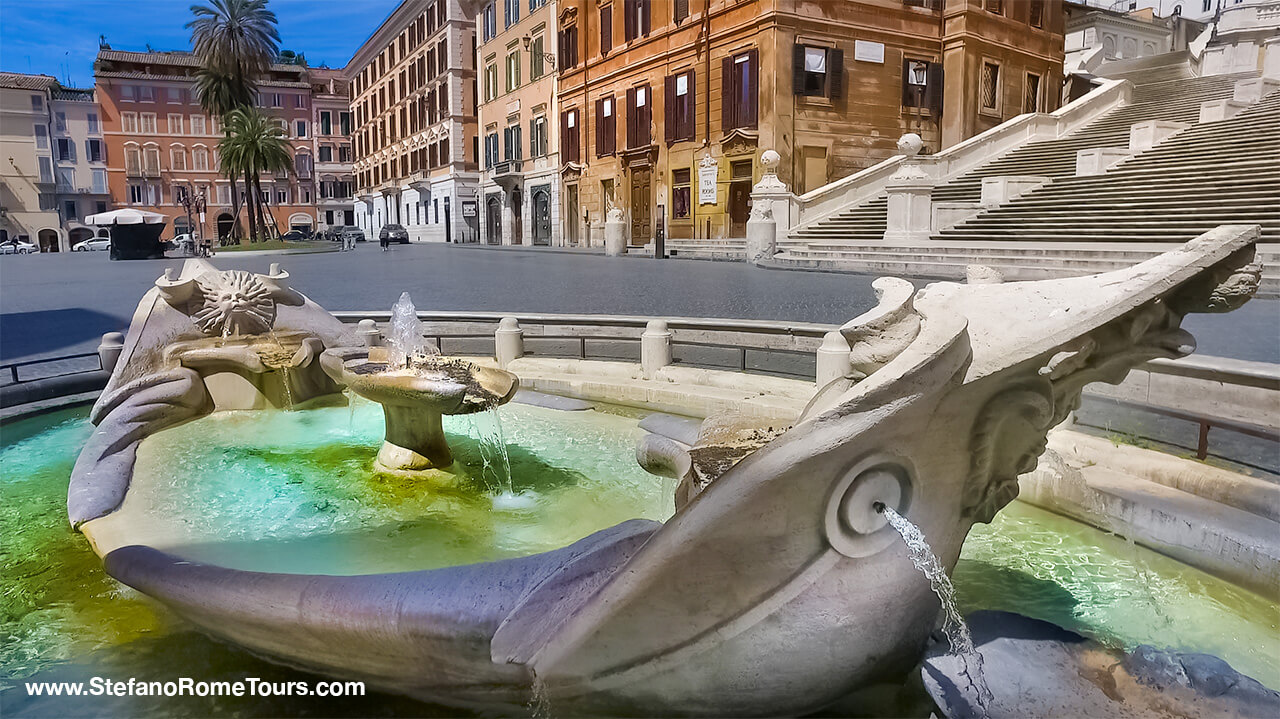
The Spanish Steps are not just a physical structure but a testament to Rome's rich history, architectural brilliance, and vibrant cultural scene. From their breathtaking design to the legends and curiosities that surround them, these iconic steps embody the spirit and charm of the Eternal City.
So, when you embark on a private Rome Tour or Shore Excursion from Civitavecchia with Stefano Rome Tours, be sure to include a visit to the Spanish Steps and immerse yourself in the magic that has made them a timeless symbol of Roman allure.
See you soon in Italy!
